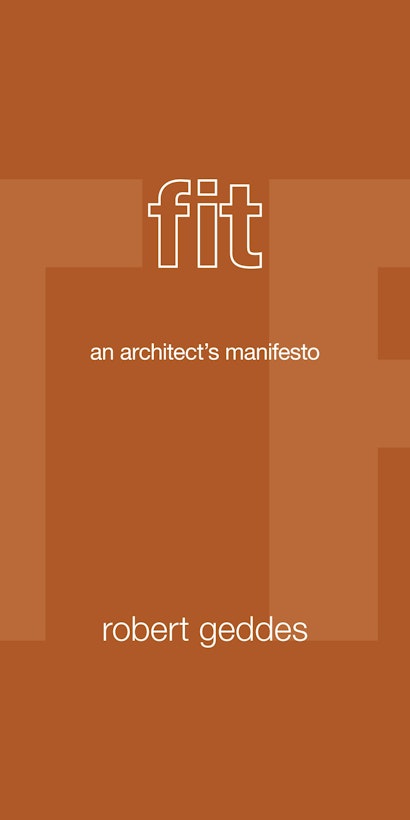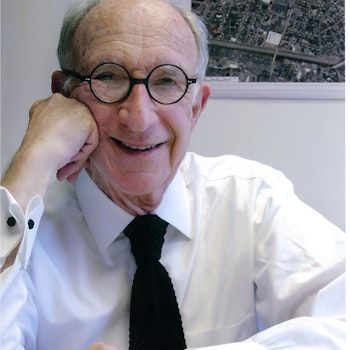Fit is a book about architecture and society that seeks to fundamentally change how architects and the public think about the task of design. Distinguished architect and urbanist Robert Geddes argues that buildings, landscapes, and cities should be designed to fit: fit the purpose, fit the place, fit future possibilities. Fit replaces old paradigms, such as form follows function, and less is more, by recognizing that the relationship between architecture and society is a true dialogue—dynamic, complex, and, if carried out with knowledge and skill, richly rewarding.
With a tip of the hat to John Dewey, Fit explores architecture as we experience it. Geddes starts with questions: Why do we design where we live and work? Why do we not just live in nature, or in chaos? Why does society care about architecture? Why does it really matter? Fit answers these questions through a fresh examination of the basic purposes and elements of architecture—beginning in nature, combining function and expression, and leaving a legacy of form.
Lively, charming, and gently persuasive, the book shows brilliant examples of fit: from Thomas Jefferson’s University of Virginia and Louis Kahn’s Exeter Library to contemporary triumphs such as the Apple Store on New York’s Fifth Avenue, Chicago’s Millennium Park, and Seattle’s Pike Place.
Fit is a book for everyone, because we all live in constructions—buildings, landscapes, and, increasingly, cities. It provokes architects and planners, humanists and scientists, civic leaders and citizens to reconsider what is at stake in architecture—and why it delights us.
Robert Geddes (1923–2023) was an architect, urbanist, and teacher. He was dean emeritus of the Princeton School of Architecture; Henry Luce Professor Emeritus of Architecture, Urbanism, and History at New York University; and a fellow of the New York Institute for the Humanities and the National Academy of Design. The American Institute of Architects honored his professional firm for its "design quality, respect for the environment, and social concern."
"There are some startling and simple truths here that are definitely helpful to an educator."—Flora Samuel, Times Higher Education
"[B]oth poetic and pragmatic. . . . Fit's message transcends professional architecture practice: it should be given to everyone in the U.S. Senate and House of Representatives."—Maxinne Rhea Leighton, eOCULUS
"The design of this book, combined with the concise and poetic text make it an immensely enjoyable read."—Andrew Molloy, LSE Review of Books
"The book is successful at explaining the concept of 'fit' and how we can go about making sure it is included in the design process. I agree that having a dialogue around this issue will improve the architectural landscape as it considers the impact building(s) will have years after being completed. . . . Geddes has inspired me to consider the symbiotic relationship humans have with architecture."—Isabelle Kim, Spacing
"In this elegant little book, mixing aphorism and example, Robert Geddes argues for the importance of 'making it fit' and shows us the many ways of doing this. His manifesto is both provocation and enlightenment."—Michael Walzer, Institute for Advanced Study
"Robert Geddes has written a lucid, perceptive, and wise book about the fundamental elements of architecture, including the basic needs that it addresses, as well as the wide range of architectural approaches and styles available to the designer and practitioner today. He does not, fortunately, propose easy solutions to the deep challenges facing contemporary architects and urban planners, but instead offers principles and considerations that can help them create works that can be 'fit' for their purposes, places, and times."—Neil Rudenstine, president emeritus, Harvard University
"Fit is a pleasure to read—lucid, wonderfully lively, and continuously interesting. Geddes's mode of arguing by quotation and illustration is very appealing, like talking with a great conversationalist with a well-stocked mind and library. And there is a real moral to the book's argument about what our architecture needs more of."—Alan Ryan, Princeton University and University of Oxford
"This is an enchanting book. Robert Geddes admirably makes the case for architecture as a social art in which function and aesthetics are complementary rather than mutually exclusive. The book provides an excellent primer for both makers and consumers of architecture—a checklist of issues to be addressed during the design process, and a lens through which to see and appreciate architecture."—Urs P. Gauchat, dean of the College of Architecture and Design, New Jersey Institute of Technology


